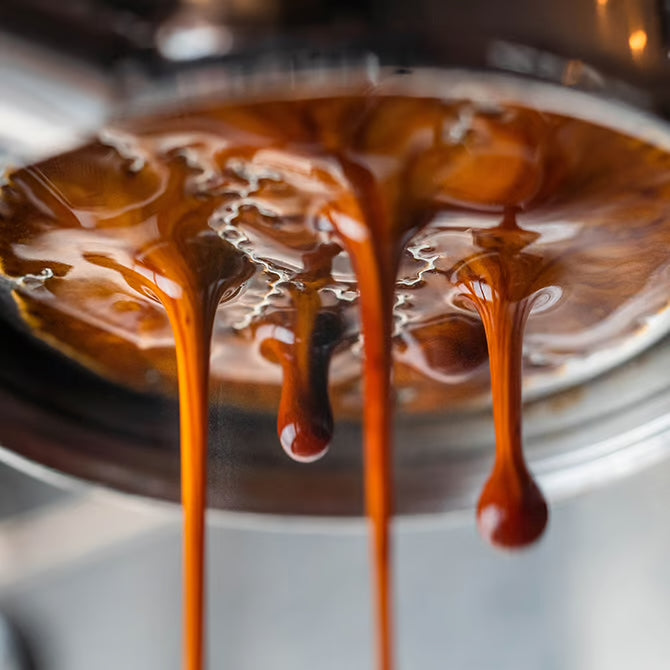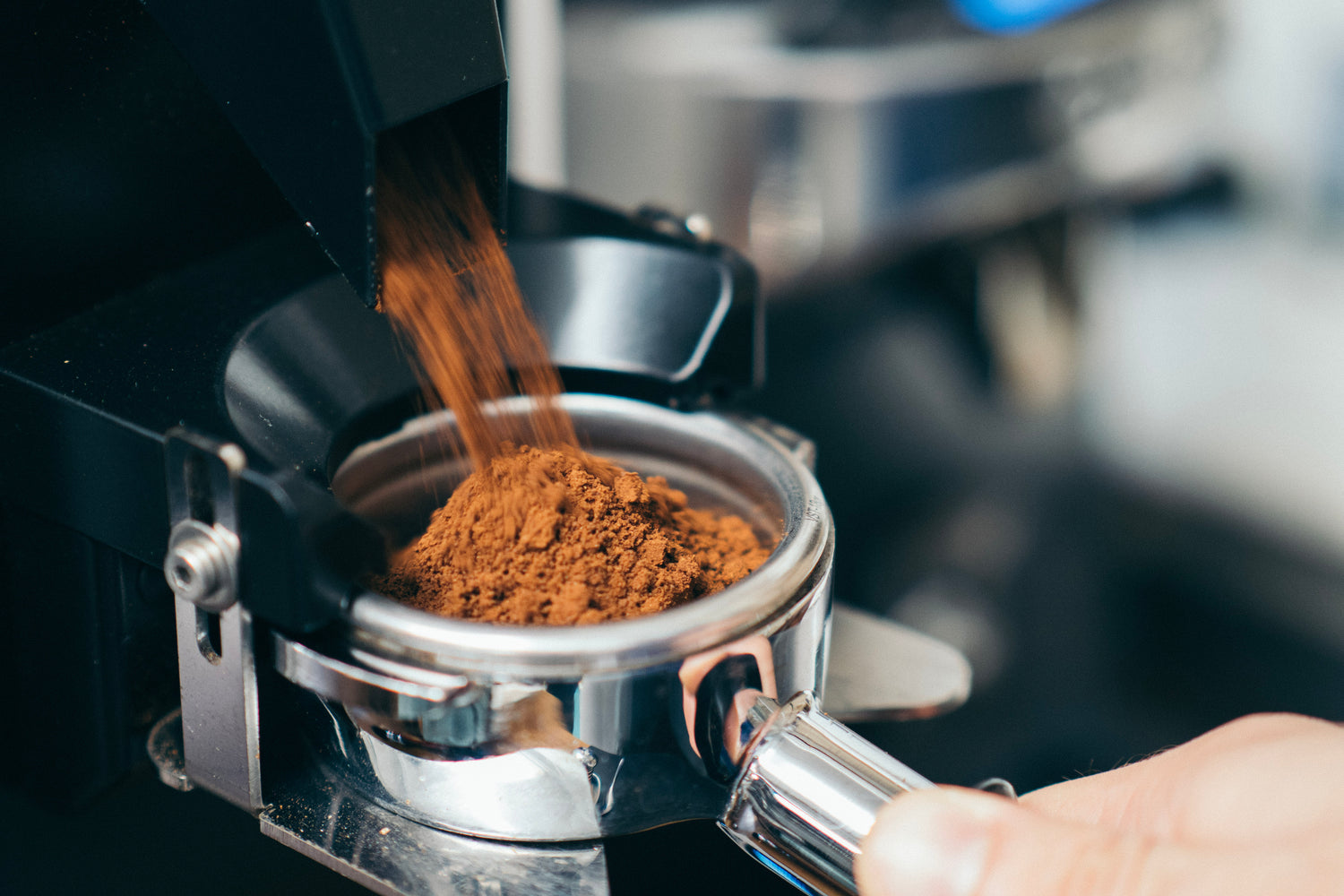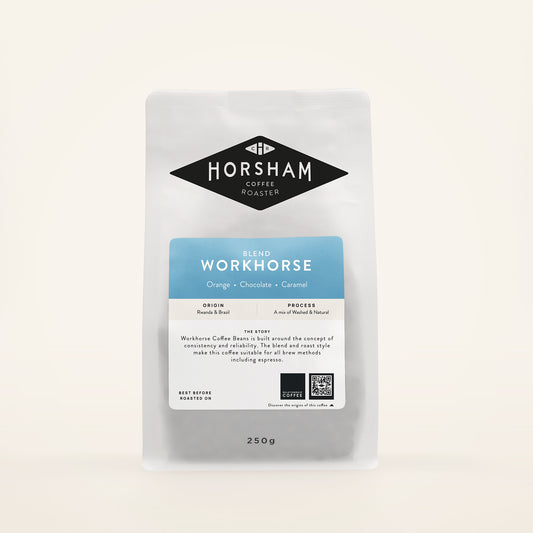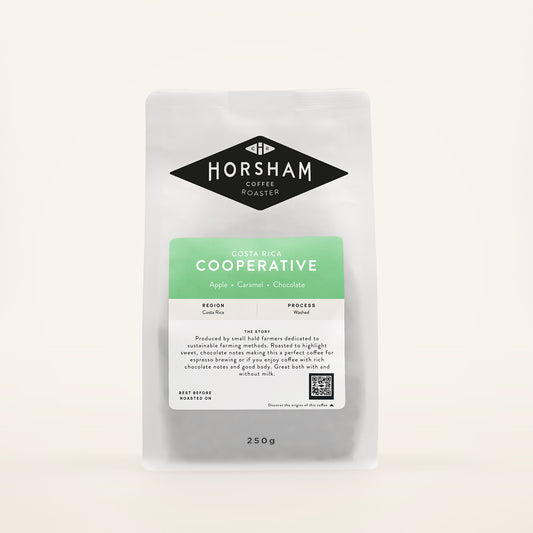Dialling in espresso at home can feel a bit like chasing perfection. If your espresso is coming out too fast, too slow, too sour or too bitter, chances are your espresso grind is the culprit.
But don’t worry – with a few tweaks and some thoughtful testing, you’ll be pulling balanced, delicious shots in no time. Here’s our guide to getting your grind just right, whether you’re new to espresso or simply looking to up your game.
Why Grind Size Matters for Espresso
Espresso is a fast extraction method that relies on pressure, precision and consistency. Because you’re forcing water through a compacted puck of finely ground coffee in just 25–30 seconds, every variable matters – and grind size is one of the most important.
If your grind is too coarse, water rushes through too quickly. This under-extracts the coffee, often resulting in a sour, weak or overly acidic shot.
If your grind is too fine, water struggles to get through, leading to over-extraction. This can make your espresso taste bitter, dry or hollow.
Finding the sweet spot – the right espresso grind for your machine and beans – is what dialling in is all about.

What You’ll Need
To start dialling in your espresso at home, we recommend having:
- A quality burr grinder – we recommend the Baratza Virtuoso + coffee grinder
- Fresh, whole bean specialty coffee
- A scales that can measure to 0.1g – we recommend the Acaia Pearl Scale
- A timer
- A bit of patience and curiosity

Start with a Baseline Recipe
Here’s a solid starting point if you’re using 18g of coffee in a standard 58mm basket:
- Dose: 18g in
- Yield: 36g out (a 1:2 ratio)
- Time: 25–30 seconds
This recipe gives you a classic espresso ratio that works well across many of our coffees. If you’re using a smaller portafilter (e.g. 54mm), aim for a lower dose but keep the 1:2 ratio and similar time.

How to Adjust Your Espresso Grind
When your espresso isn’t quite right, grind size is often the first thing to change:
If your espresso runs too fast:
- You’ll get under-extracted flavours: sharp acidity, thin body, or sour notes
- Solution: Make your grind finer to slow the flow
If your espresso runs too slow:
- You may notice bitterness, dryness, or a “chalky” finish
- Solution: Make your grind coarser to speed things up

How to Know When It’s Dialled In
A great shot of espresso should taste balanced, sweet, and complex. You want to highlight the origin character of the coffee – whether that’s chocolate and nuts in our Nova Espresso, or juicy fruit notes in something like a washed Rwandan.
Use your senses:
- Taste: It shouldn’t be too sharp or too bitter
- Texture: Aim for a silky, full-bodied mouthfeel
- Crema: Should be golden and persistent, not thin or bubbly
- Flow: A gentle, steady stream – not gushing or dripping

How Often Should You Re-Dial In?
Espresso is sensitive – changes in humidity, coffee age, and even room temperature can affect how your shot pulls. If your coffee is fresh (within 2–3 weeks of roast), we recommend adjusting your grind every few days to maintain consistency.
If you’re switching to a different coffee – especially from a washed to a natural or a lighter roast – it’s always worth starting the dial-in process again. Lighter roasts often require finer grinding and more attention to puck prep.

Don’t Forget Your Tamping & Distribution
Even the perfect espresso grind won’t help if your puck is uneven. Be sure to:
- Distribute grounds evenly before tamping
- Tamp consistently with firm, level pressure
- Purge your machine to keep temperature and pressure stable
Our Favourite Coffees for Home Espresso
If you’re dialling in espresso at home, here are a few of our favourite coffees to start with:
- Workhorse Blend – our lighter roast espresso and perfect if you like a bright, juicy, but well-balanced espresso.
- Nova Espresso – our more traditional blend, crafted for consistency and versatility
- El Zumo Blend – a bold, juicy and fruity espresso blend.
- Decaf (Mountain Water) – all the flavour, none of the caffeine
All of our coffees are roasted with espresso in mind, and our roast profiles are light to medium, preserving flavour clarity while offering great body and structure for espresso brewing.
Discover Specialty Espresso Coffee Beans
-
Orange | Chocolate | Sweet Caramel
Workhorse Blend Washed & Pulped Natural
Regular price From £9.00Regular priceUnit price per -
Dark Chocolate | Nuts | Sweet Caramel
Nova Espresso Blend Natural, Washed & Pulped Natural
Regular price From £9.00Regular priceUnit price per -
Cherry | Strawberry | Chocolate
El Zumo Blend Natural
Regular price From £10.75Regular priceUnit price per -
Red Apple | Caramel | Chocolate
Cooperative Costa Rica | Honey
Regular price From £10.25Regular priceUnit price per




